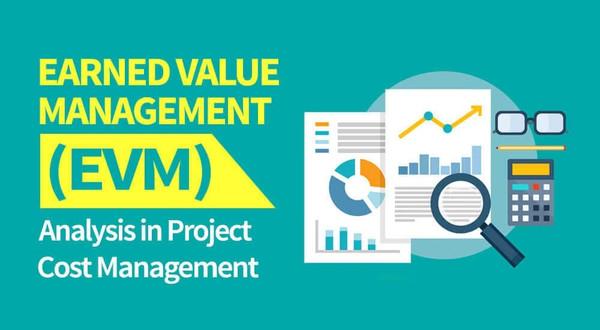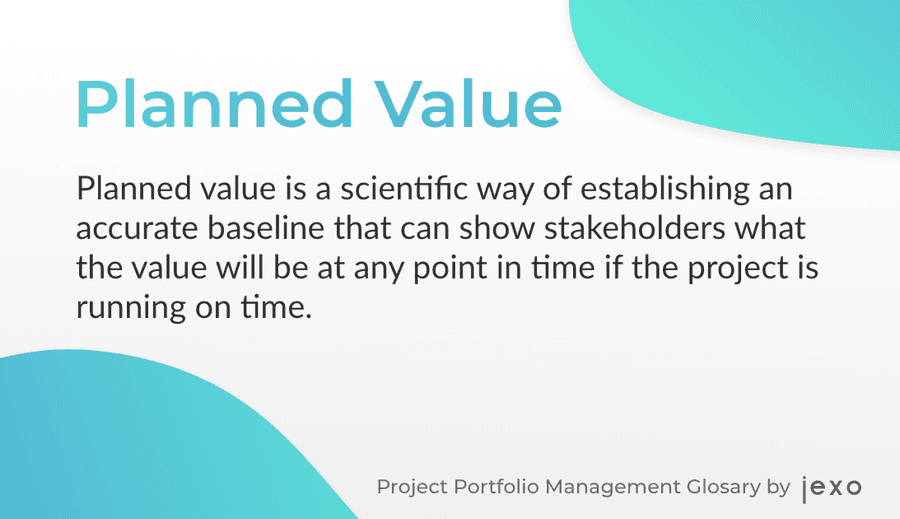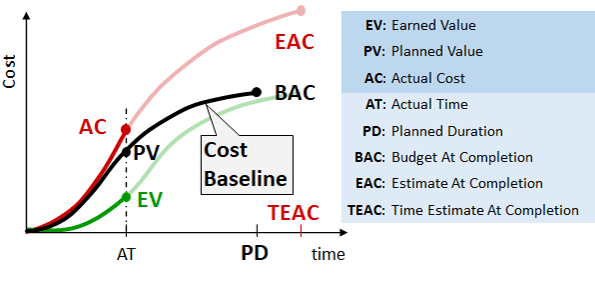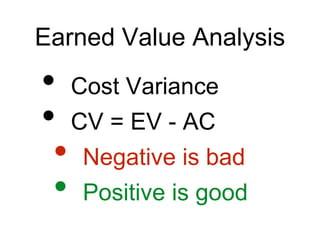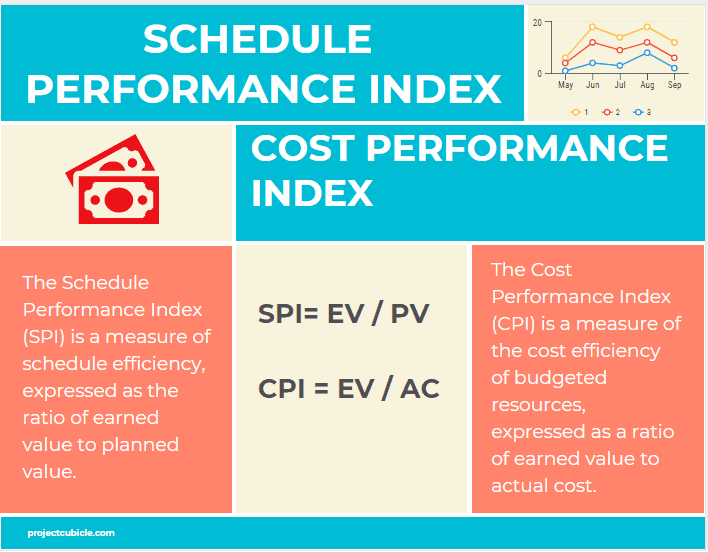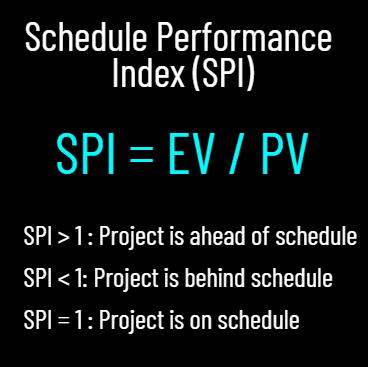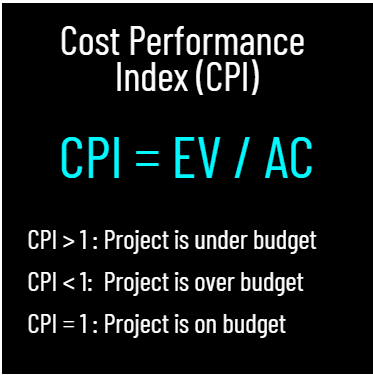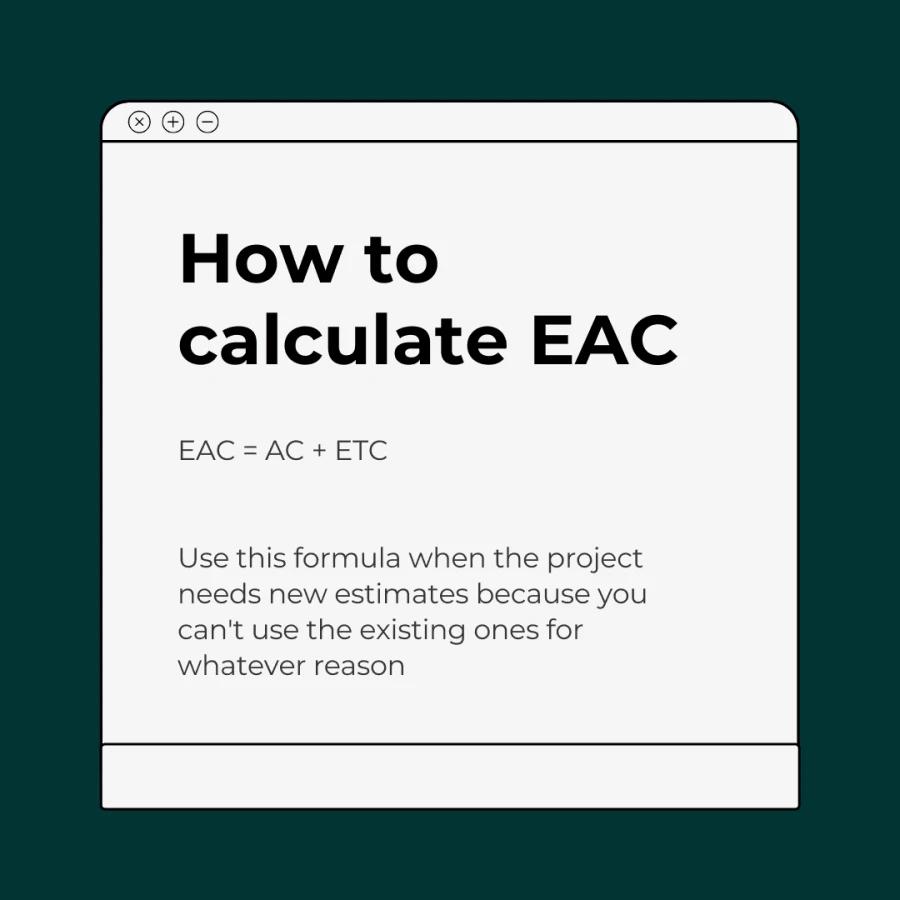PMP Study: Earned Valued Management Systems (BAC,EV, etc...)
Curated from: pmi.org
Ideas, facts & insights covering these topics:
18 ideas
·1.45K reads
10
Explore the World's Best Ideas
Join today and uncover 100+ curated journeys from 50+ topics. Unlock access to our mobile app with extensive features.
What is Earned Value Analysis?
Earned Value Analysis (EVA) is a method that allows the project manager to measure the amount of work actually performed on a project beyond the basic review of cost and schedule reports.
EVA provides a method that permits the project to be measured by progress achieved. The project manager is then able, using the progress measured, to forecast a project’s total cost and date of completion, based on trend analysis or application of the project’s “burn rate”.
This method relies on a key measure known as the project’s earned value.
20
267 reads
What to remember about EVA...
Oftentimes the term “earned value” is defined as the “budgeted cost of worked performed” or BCWP.
This budgeted cost of work performed measure enables the project manager to compute performance indices or burn rates for cost and schedule performance, which provides information on how well the project is doing or performing relative to its original plans.
These indices, when applied to future work, allow for to project manager to forecast how the project will do in the future, assuming the burn rates will not fluctuate, which oftentimes is a large assumption.
18
162 reads
EVM Foundational Concepts
Earned Value Management Systems allow the project manager to answer the following three questions, as they relate to the project:
Where have we been?
Where are we now?
Where are we going?
In Earned Value Management, unlike in traditional management, there are three data sources:
– the budget (or planned) value of work scheduled
– the actual value of work completed
– the “earned value” of the physical work completed
Earned Value takes these three data sources; compares the budgeted value of work scheduled & “earned value of physical work completed” & the actual value of work completed.
20
110 reads
Planned Value (PV)
Planned Value describes how far along project work is supposed to be at any given point in the project schedule and cost estimate.
PV, also known as Budget Cost of Work Scheduled (BCWS), can be defined as:
- Define Scope: What you are tasked to do (Scope Statement)
- Assign Scope: Breakdown scope into manageable parts (WBS)
- Schedule Scope: Time-phased, logic driven with critical path (Project Schedule)
- Budget Scope: develop cost (budget) for all approved scope (Performance Measurement Baseline)
- Baseline: Snap-shot in time, frozen. What performance measurement will be based upon.
18
98 reads
Actual Costs (AC)
Actual Cost (AC), also called actual expenditures, is the cost incurred for executing work on a project. This figure tells you what you have spent and, as with Planned Value, can be looked at in terms of cumulative and current.
- Cumulative AC is the sum of the actual cost for activities performed to date.
- Current AC is the actual costs of activities performed during a given period. This period could represent days, weeks, months, etc. AC is also called Actual Cost of Work Performed (ACWP).
19
88 reads
Earned Value (EV)
To report the accomplishments of the project, you must apply Earned Value (EV) to the figures and calculations in the project. EV is the quantification of the “worth” of the work done to date.
In other words, EV tells you, in physical terms, what the project has accomplished. As with PV and AC, EV can be presented in a Cumulative and Current fashion.
- Cumulative EV is the sum of the budget for the activities accomplished to date.
- Current EV is the sum of the budget for the activities accomplished in a given period. Earned Value is also called Budgeted Cost of Work Performed (BCWP).
18
72 reads
Variance Analysis (VA)
The PM will be provided with financial information from accounting that will expressed the actual cost incurred on the project's work is performed, then the PM will seek information from the team that will state the budgeted cost of work performed on the project, or earned value.
After those three values are established, a variance analysis can be performed.
There are two basic expressions of variance, schedule variance and cost variance.
18
67 reads
Schedule Variance (SV)
Schedule Variance status does indicate the dollar value difference between work that is ahead or behind the plan and reflects a given measurement method.
Schedule Variance status does not address impact of work sequence.
The formula utilized to express schedule variance is project earned value minus the project planned value as of the date of examination.
*VERY IMPORTANT*
(SV = EV – PV) If the variance is equal to 0, the project is on schedule.
If a negative variance is determined, the project is behind schedule and if the variance is positive the project is ahead of schedule.
19
61 reads
Cost Variance (CV)
The cost variance is defined as the “difference between earned value and actual costs. (CV = EV – AC)” (PMI, 2004, p. 357)
Sometimes this formula is expressed as the difference between budgeted cost of work performed and actual cost work performed.
*VERY IMPORTANT*
If the variance is equal to 0, the project is on budget.
If a negative variance is determined, the project is over budget and if the variance is positive the project is under budget.
19
56 reads
Performance Indexes (PI)
Another analysis that can be done by using EVMS is that of Performance or establishing the project’s burn rate.
Two examination of performance are available to the project manager, Schedule Performance Index (SPI) and Cost Performance Index (CPI).
19
62 reads
Schedule Performance Index (SPI)
The SPI is defined by PMI’s PMBOK® Guide as “a measure of schedule efficiency on a project.
It is the ratio of earned value (EV) to planned value (PV). The SPI is equal to earned value divided by planned value, SPI = EV/PV.
An SPI equal to or greater than one indicates a favorable condition and a value of less than one indicates an unfavorable condition.
Assuming your SPI efficiency remains through out the reminder of work; your project will finish ahead of schedule.
18
54 reads
Cost Performance Index (CPI)
The CPI is defined by PMI’s PMBOK® Guide as a measure of cost efficiency on a project.
It is the ratio of earned value (EV) to actual costs (AC). The CPI is equal to the earned value divided by the actual costs, CPI = EV – AC.
Assuming your CPI efficiency remains the same throughout the reminder of work; your project will be over budget.
18
51 reads
Cost Performance Index (CPI) Deeper Understanding Pt.2
Potential Causes of Favorable Cost Performance:
- Efficiencies being realized
- Work less complex than anticipated
- Fewer revisions and rework
- Favorable Market Fluctuations in the Cost of Labor or Material
- Overhead Rate Decreases
Potential Causes of Unfavorable Cost Performance
- Work more complex than anticipated
- Design review comments extensive
- Rework
- Unclear Requirements
- Scope Creep
- Unfavorable Market Fluctuations in the Cost Labor or Material
- Overhead Rate Increases
18
61 reads
Estimates to Complete (EAC)
Anticipating future progress requires determining when the project will be completed and how much it will cost to complete it.
The Estimate at Completion (EAC) is the actual cost to date plus an objective estimate of costs for remaining authorized work.
The objective in preparing an EAC is to provide an accurate projection of cost at the completion of the project.
The Budget at Completion (BAC) is the sum of all budgets allocated to a project scope.
The Project BAC must always equal the Project Total PV. If they are not equal, your earned value calculations and analysis will be inaccurate.
19
49 reads
EAC Deeper Understanding PT.2
- Planned Value (PV) - How much work should be done?
- Earned Value (EV) - How much work was done?
- Actual Cost (AC) - How much did the work cost?
- Budget at Completion (BAC) - What is the total job budgeted to cost?
- Estimate at Completion (EAC) - What do we expect the total job to cost?
The EAC is the best estimate of the total cost at the completion of the project. The EAC is a periodic evaluation of the project status, usually on a monthly basis or when a significant change happens to the project.
19
46 reads
Summary of Earned Value Management (EVM)
- Organize the project team & the scope of work, using a work breakdown structure. Each task should have a single WBS number and organizational code.
- Schedule the tasks in a logical manner so that lower level schedule elements & the top level milestones.
- Allocate the total budget resources to time-phased control accounts.
- Establish objective means for measuring work accomplishment. Budget should be earned equal to planning.
- Control the project by analyzing cost and performance variances, assessing final costs, developing corrective actions, and controlling changes to the integrated baseline.
19
51 reads
References:
Project Management Institute. (2004) A Guide to the Project Management Body of Knowledge (PMBOK® Guide). (Third ed.) Newtown Square, PA: Project Management Institute
Project Management Institute. (2005) Practice standard for earned value management (PMI Global Standard) (2005 ed.) Newtown Square, PA: Project Management Institute
Government Electronics and Information Association. (2002) Earned value management systems Approved: May 19, 1998. Reaffirmed: August 28, 2002. ANSI/EIA-748-A-1998
United States Department of Energy (2005) Earned value management application guide, version 1.6. 1-1-2005.
19
43 reads
18
58 reads
IDEAS CURATED BY
Self Motivated, Trauma Neutralizer, Lover of Persiflage & Communication!
CURATOR'S NOTE
Interested in being a certified PMP Project Manager? Follow me for curated information pertaining to the PMP certification.
“
Similar ideas
1 idea
The price of anything...
brainyquote.com
7 ideas
11 ideas
10 Uncommon Habits To Beat 99% of Population
betterhumans.pub
Read & Learn
20x Faster
without
deepstash
with
deepstash
with
deepstash
Personalized microlearning
—
100+ Learning Journeys
—
Access to 200,000+ ideas
—
Access to the mobile app
—
Unlimited idea saving
—
—
Unlimited history
—
—
Unlimited listening to ideas
—
—
Downloading & offline access
—
—
Supercharge your mind with one idea per day
Enter your email and spend 1 minute every day to learn something new.
I agree to receive email updates
